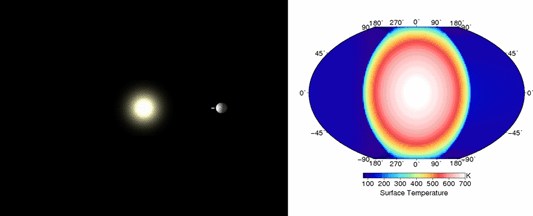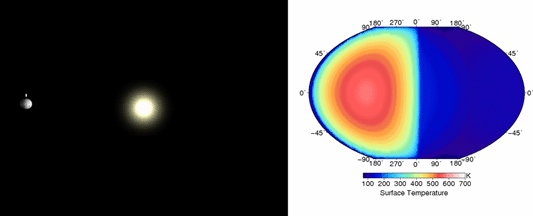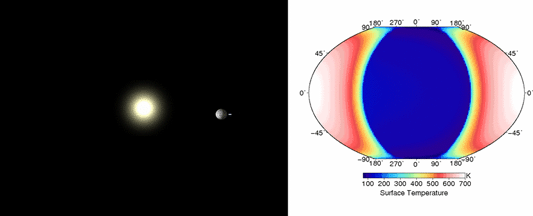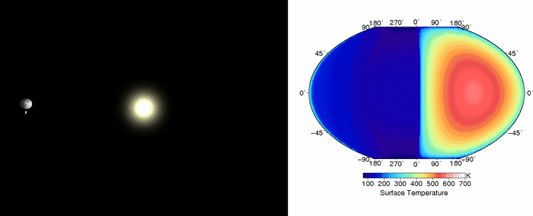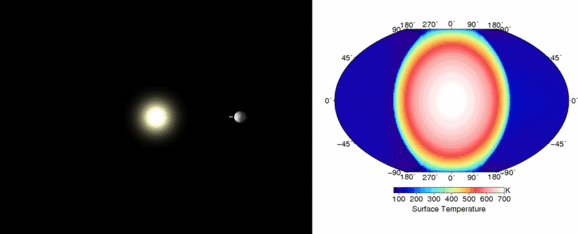Mercury experiences extreme temperature variations on its surface because, like out Moon, Mercury lacks a substantial atmosphere to buffer surface temperatures. Without the moderating effects of an atmosphere or oceans like the Earth, the intense solar radiation (the sun appears about 2½ times larger in Mercury's sky) results in surface temperatures reaching an extreme 700 K (801 oF or 427 oC) at the subsolar point (local noon time). The nights on Mercury are long due to its slow rotation. Since there is no atmosphere to trap heat, it radiates from the surface directly into space at night and the surface gets very cold, about 90 K (-297 oF or -183 oC). Such temperature extremes do not occur on planets with atmospheres due to the insulating effects of the atmospheres that moderate temperature extremes and maintain a warmer temperature at night (the greenhouse effect).
